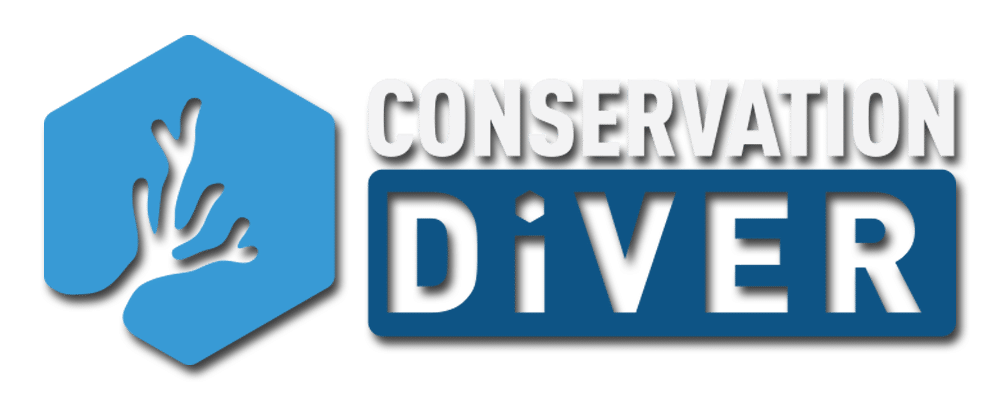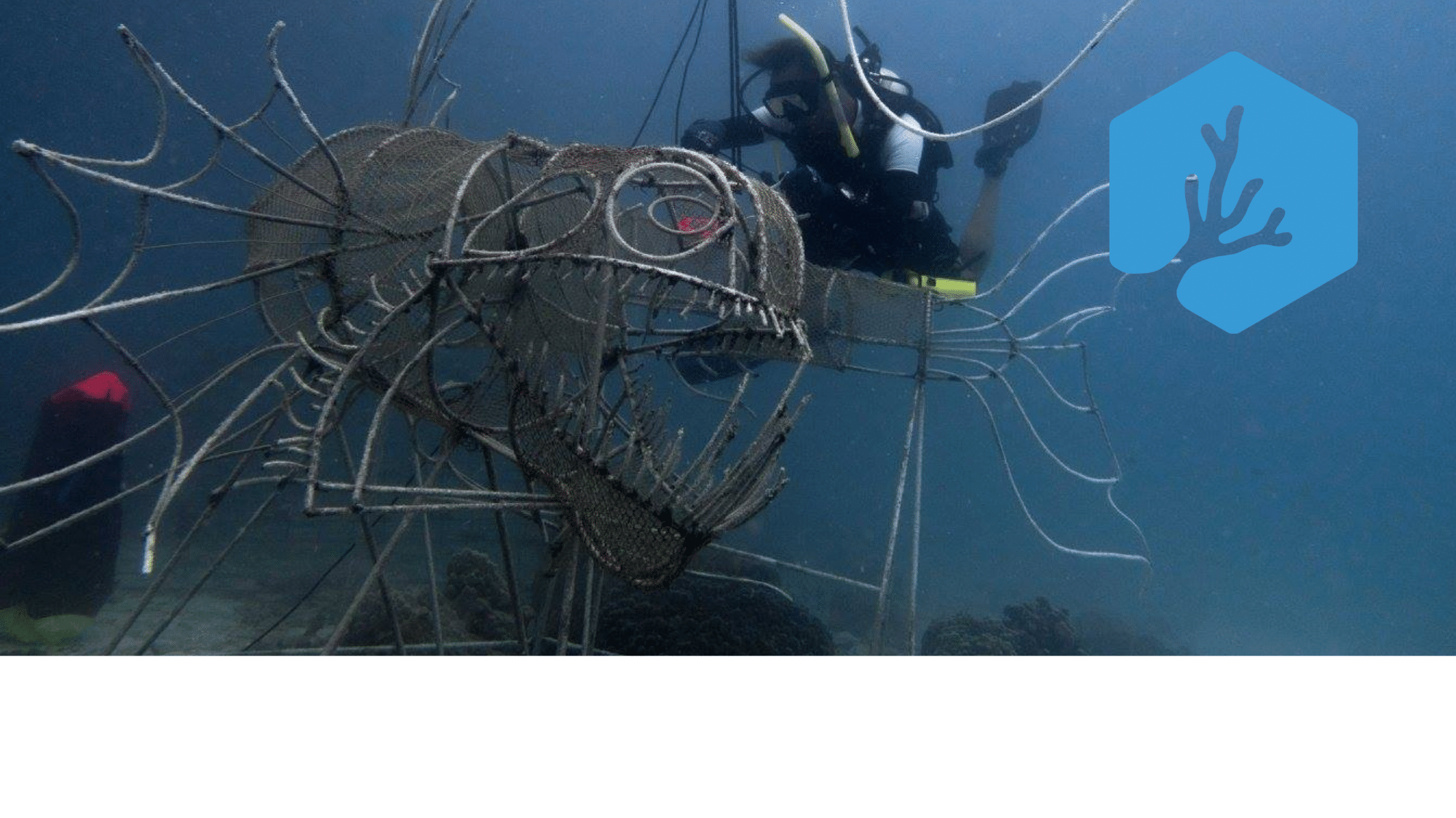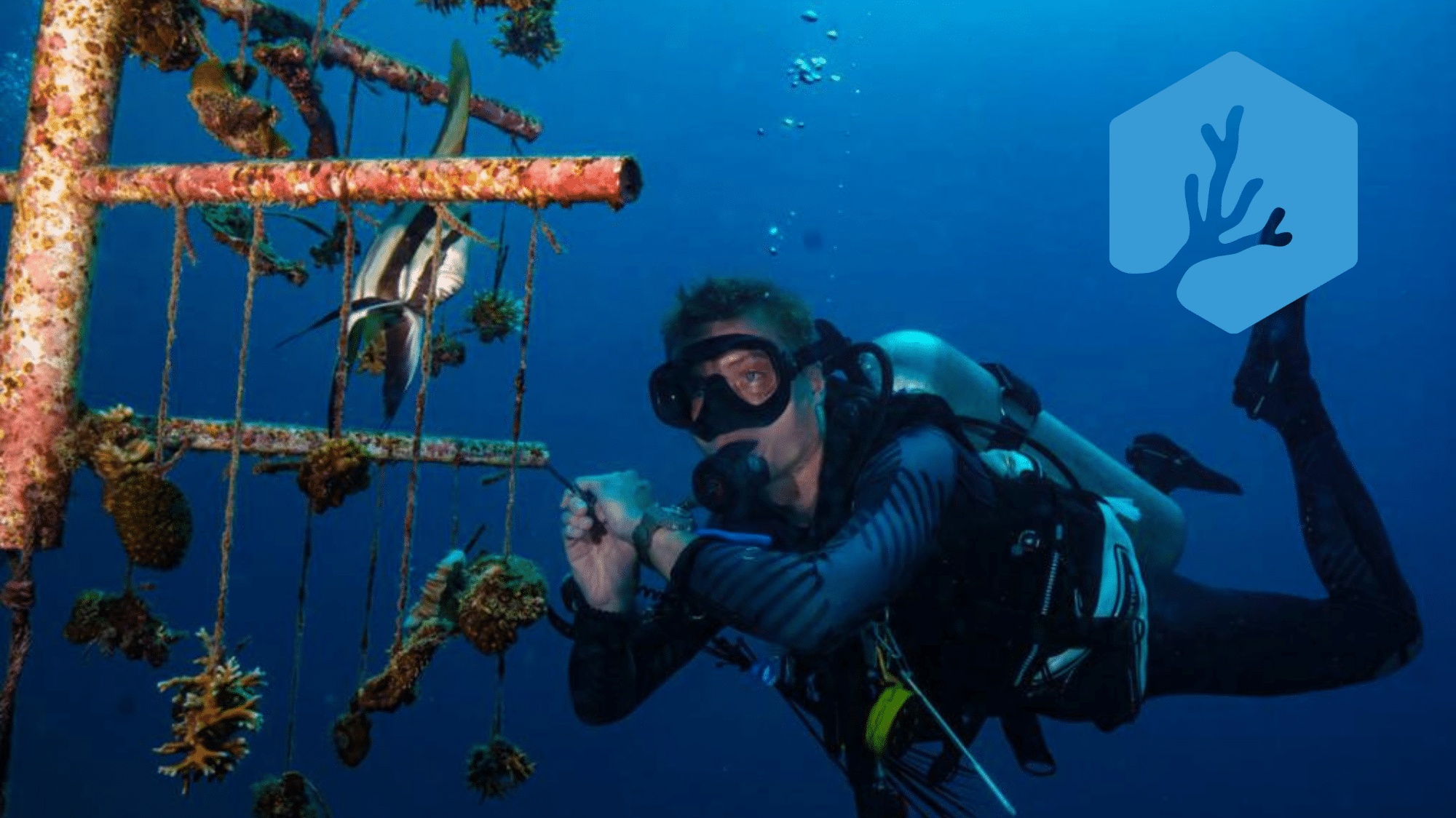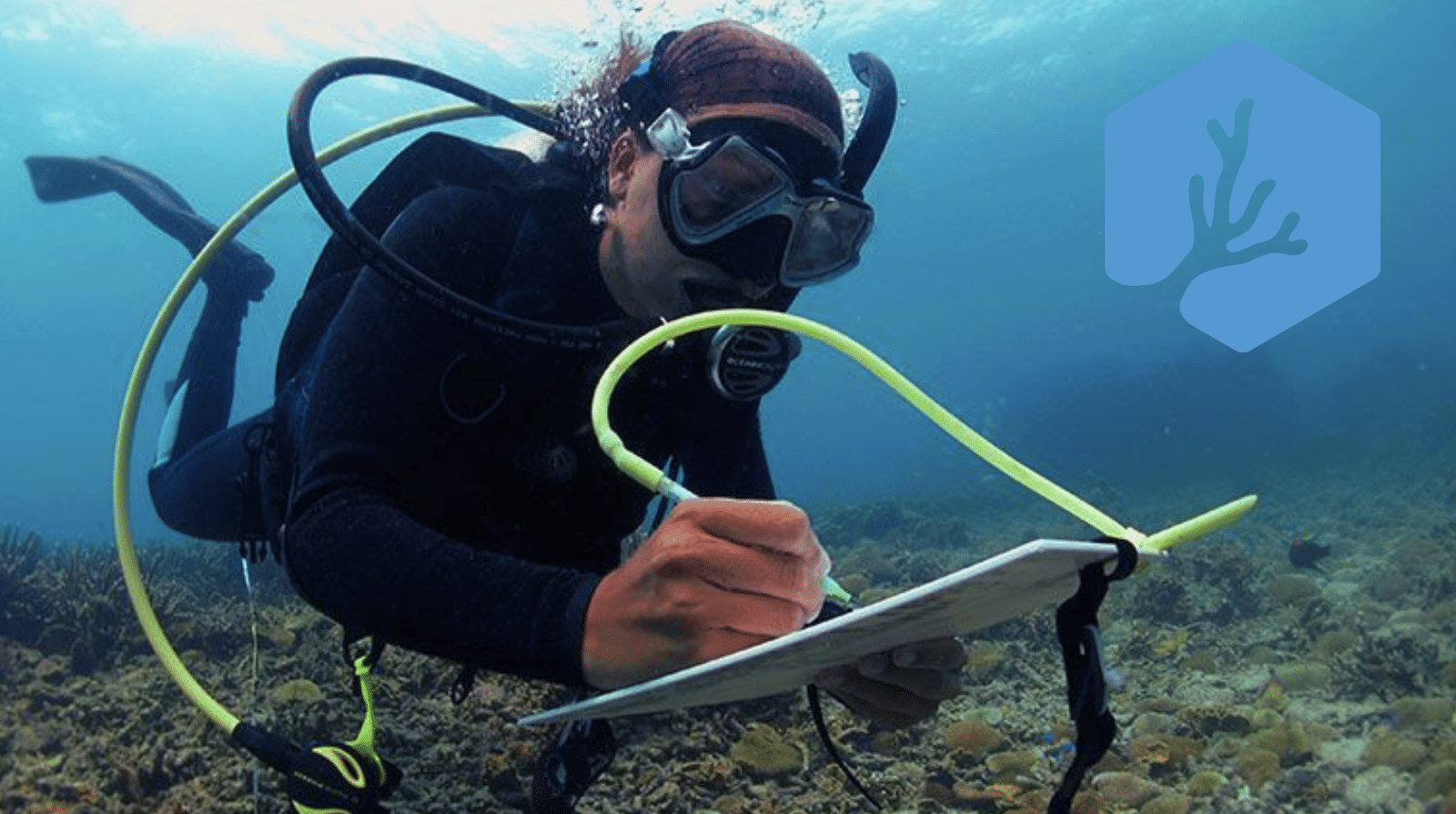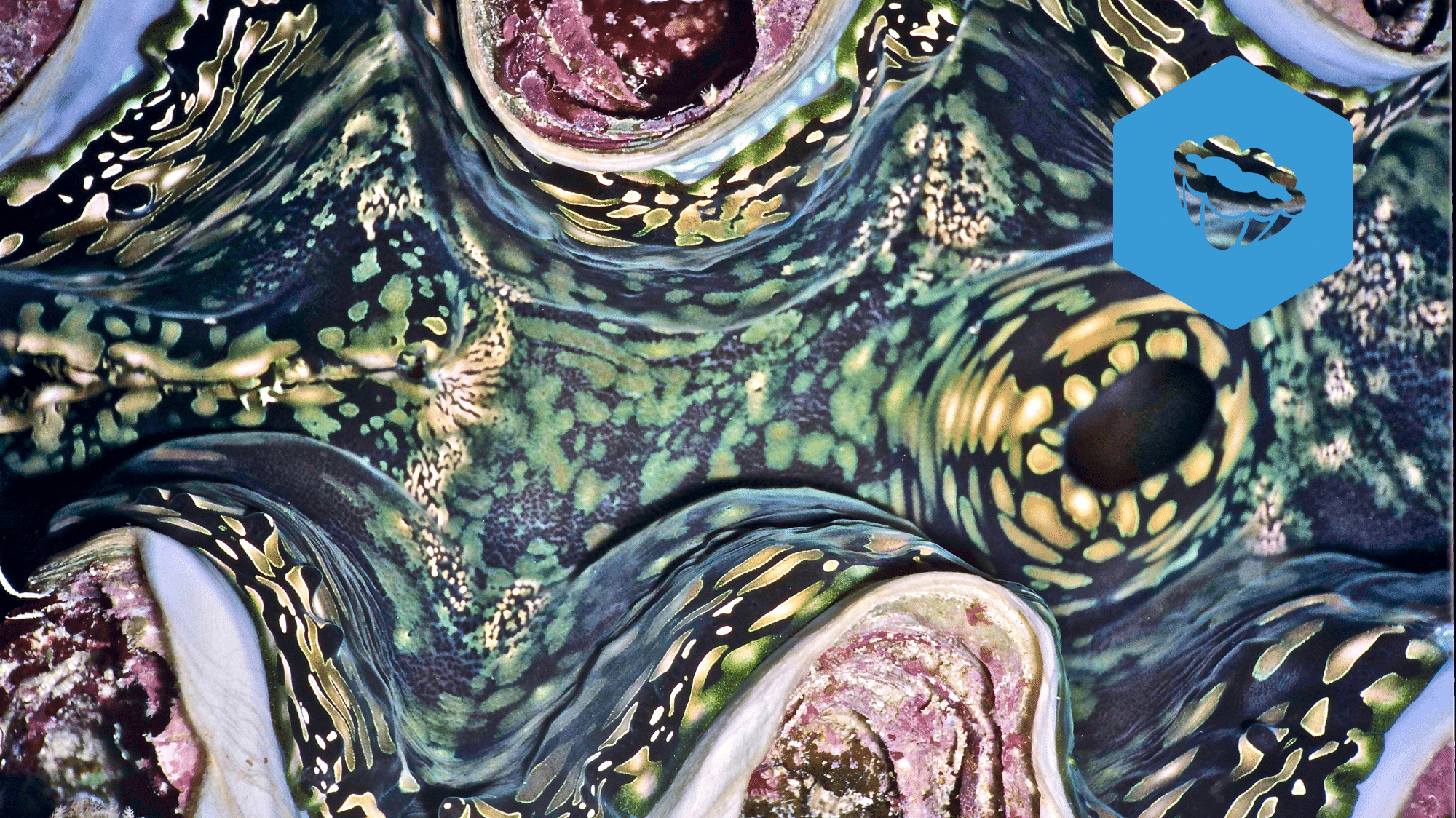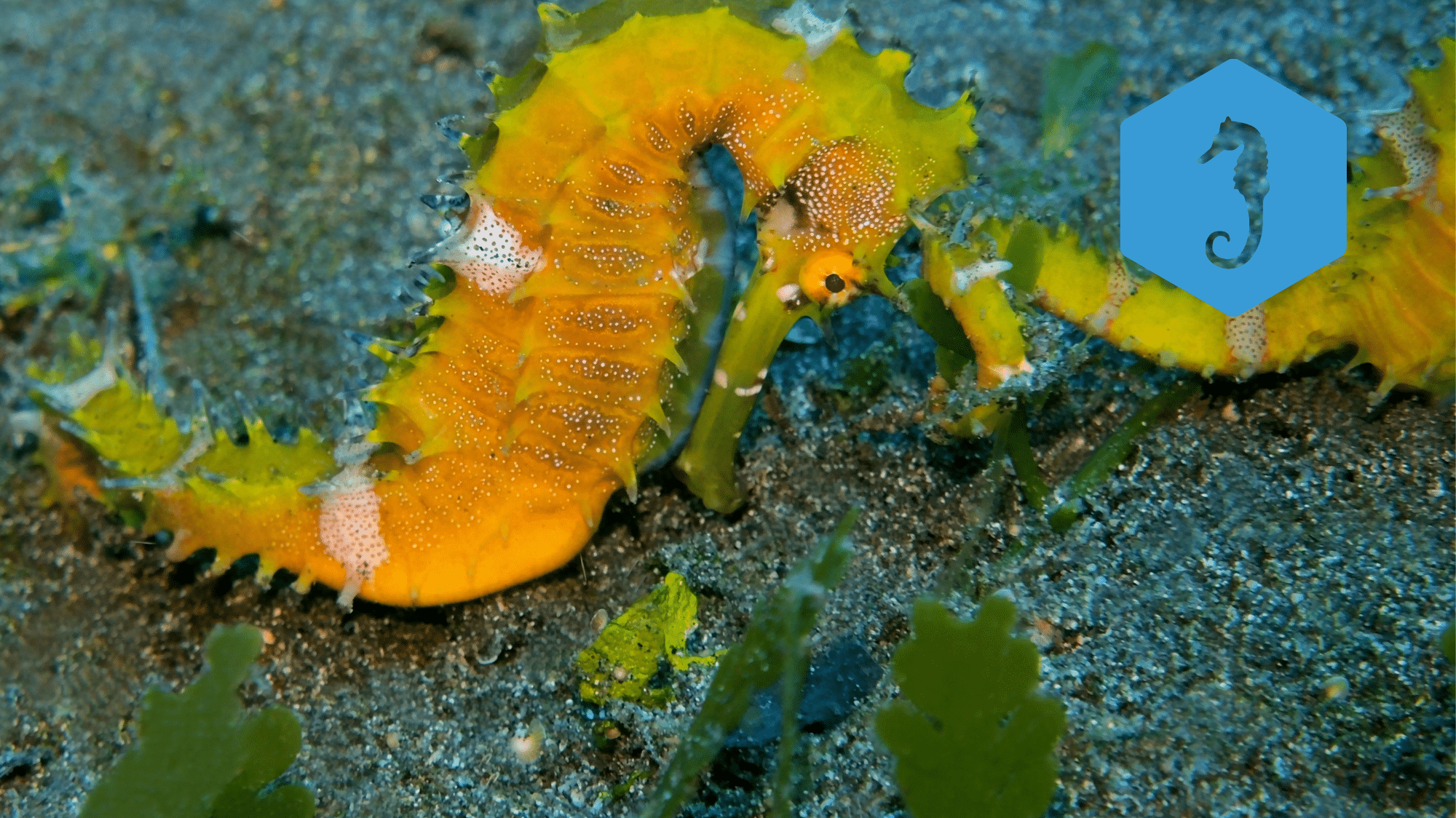Artificial Reef Theory & Techniques
Artificial Reef Theory & Techniques
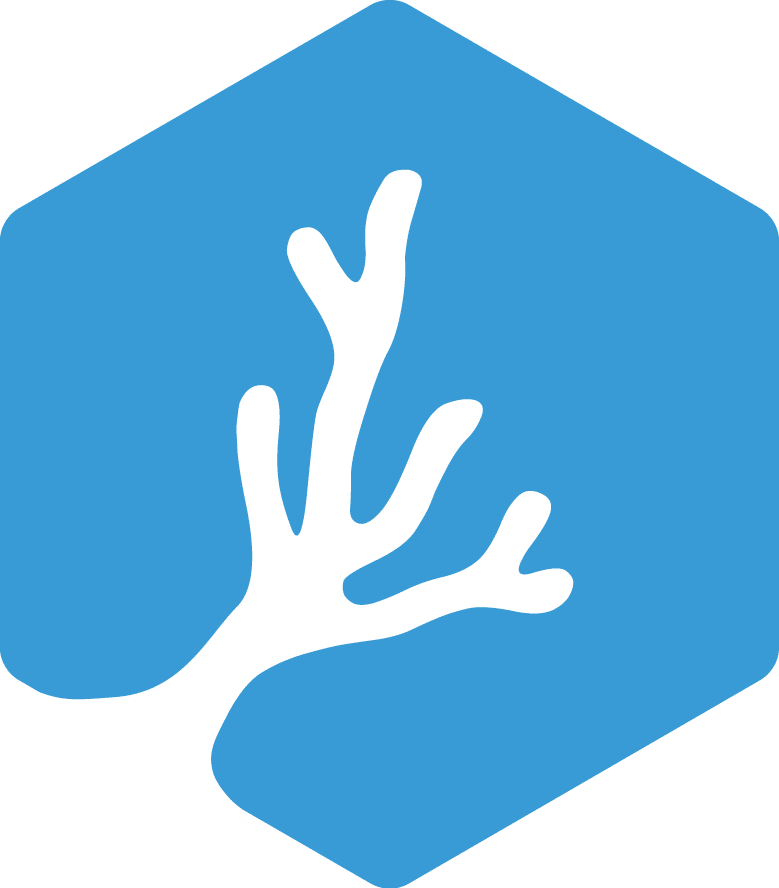
Artificial reefs have a wide range of uses in both coral reef restoration and problem mitigation. Artificial reefs (or structural restoration) can replace structure in disturbed areas, expand reef areas, provide alternative dive sites and diver training aids, or provide interesting art installations. Although they can be made simply, there is a lot of planning and theory behind any artificial reef instalment, and this course will give you the knowledge and skills you need to begin.




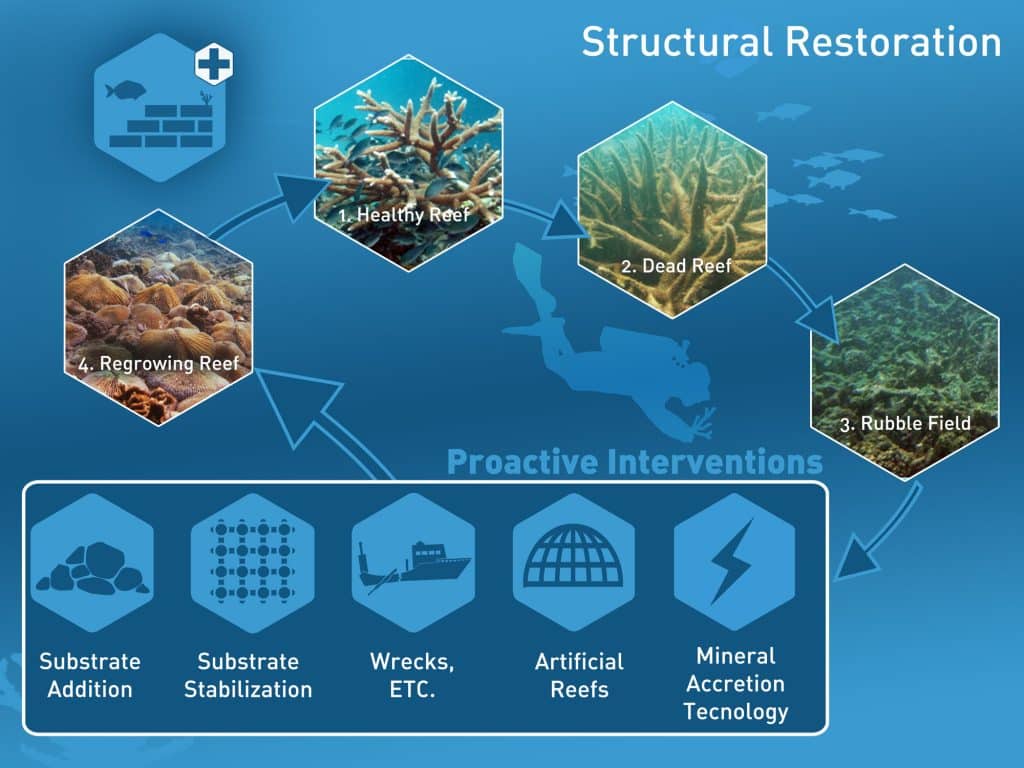
Prerequisites
- Be 12 years of age or older
- Be certified as an Advanced diver under a leading diving organization (PADI, SSI, RAID, etc) or an Open Water diver who has satisfactorily completed a buoyancy appraisal with a professional diver
- Demonstrate proper diving ability at an advanced Level and be proficient in buoyancy and self-awareness
- Complete the knowledge-building section of the Coral Restoration Theory and Techniques Course
Standards
- Understand the use and applications of artificial reefs and the differences between different artificial reefs types and materials
- Learn the practical standards and techniques for maintaining and monitoring artificial reefs
- Be able to identify the threats/disturbance history to a coral reef area and decide if artificial reefs are necessary, and which type of structure to use.
- Understand potential reasons for failure in artificial reef projects and the importance of proper planning and regular, long term maintenance.
- Learn to design and build an artificial reef structure specific to a chosen location using local techniques and standards
- Visit various artificial reefs that have been constructed from a range of materials and methods and evaluate the strengths and weaknesses of each type
- Deploy an artificial reef and understand how to transplant corals onto the structure
Requirements
- Attend the artificial reef knowledge development sessions (2) and complete the written exam
- Construct and deploy an artificial reef structure
- Attend 3 dive briefings
- Perform 3 artificial reef dives (1) Maintenance and observation dive (2) monitoring and data Collection (3) deployment and attachment of coral from the coral nursery
- Understand or practice at least 3 different transplanting techniques
Minimum course duration 10 hours
Certification Card
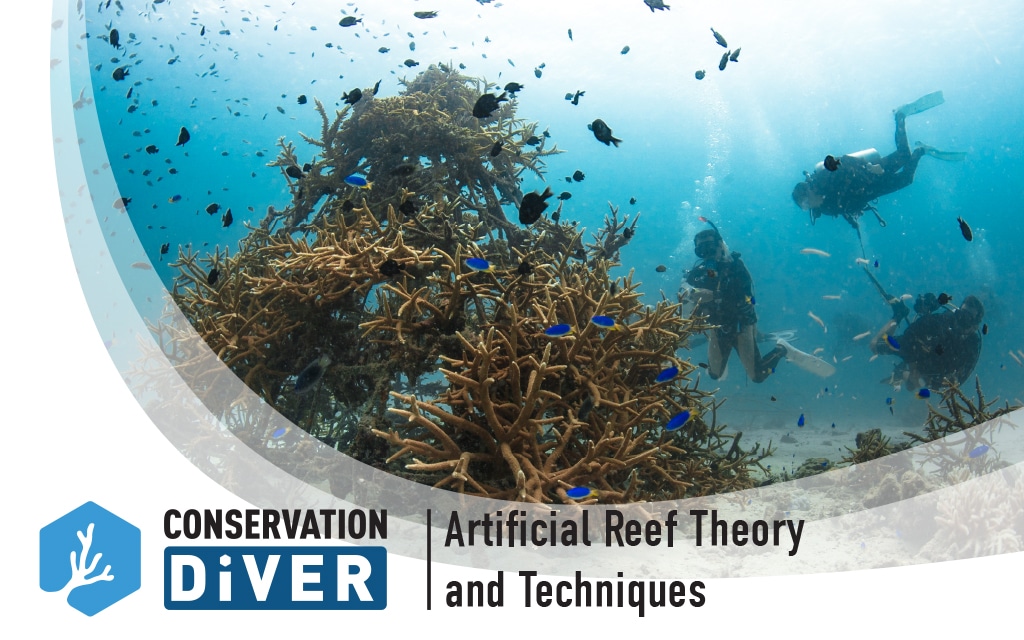
Training Centers
- Hawai'i - Ocean Alliance Project
- Madagascar - MRCI
- Indonesia - Bali Conservation Diving
- Indonesia – Blue Marlin Conservation
- Indonesia - Gili Eco Trust
- Indonesia - North Bali Reef Conservation
- Thailand – ATMEC
- Thailand – Black Turtle Conservation
- Thailand – NHRCP
- Thailand - The Adventure Club
Publications and Articles Related to this Course
Scientific Publications
- Contrasting coral community structures between natural and artificial substrates at Koh Tao, Gulf of Thailand
Coline Monchanin, Rahul Mehrotra, Elouise Haskin, Chad M Scott, Pau Urgell Plaza, Alyssa Allchurch, Spencer Arnold, Kirsty Magson, Bert W Hoeksema - Ecotourism and Coral Reef Restoration by Margaux Y Hein, Fanny Couture, Chad M Scott
- Coral restoration: Socio-ecological perspectives of benefits and limitations by Margaux Y Hein, Alastair Birtles, Bette L Willis, Naomi Gardiner, Roger Beeden, Nadine A Marshall
Articles
Coral Restoration Theory & Techniques
Coral Restoration Theory & Techniques

Recent studies have found that about 50% of the world's coral reefs have already been lost, and the other 50% are highly threatened. The long running philosophy of “protection is always preferred over restoration” is a luxury which no longer applies to most regions. More and more, restoration is necessary to preserve the biodiversity and functionality of reefs, and to ensure the sustainability of the resources they provide.
Our reef restoration programs have evolved greatly since our first coral nursery in 2007. We take an ecosystem approach to restoration, which means that we take a holistic approach, focusing on the long-term sustainability and adaptability of the ecosystem rather then just trying to add more corals into areas where they will not survive. This approach has proven successful, as detailed in this 2020 independent analysis of our reef restoration techniques following more than 10 years of our concentrated efforts.
Our courses are on the cutting-edge of science-based coral restoration with a focus on genetics, adaptability, and resilience. We also adhere to the code of ethics as outlined by the Coral Restoration Consortium. Participants in our program will learn all of the theory and techniques behind coral reef restoration, as well as get hands on practice in these techniques. With almost 15 years of experience, we can ensure that everybody coming through our program will leave feeling knowledgeable enough to initiate programs of their own, and confident enough in their skills to carry those projects out to completion.
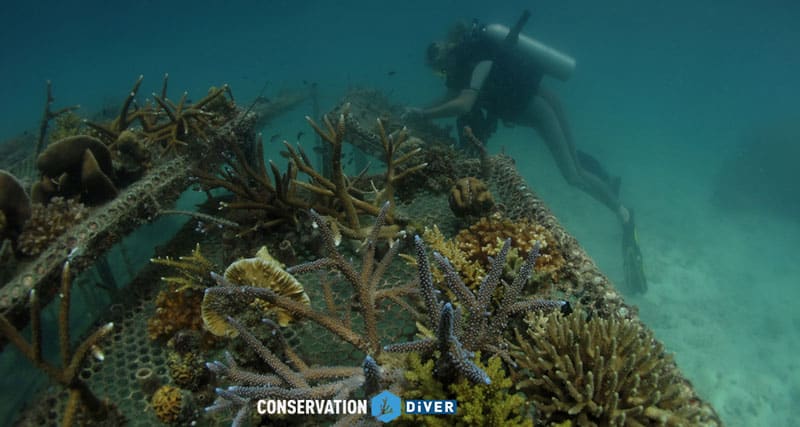
Our Coral Restoration Topics Include
- Coral Gardening
- Coral Fragment Collections
- Coral Nursery construction, maintenance, and monitoring
- Out-planting corals to the reef
- Monitoring transplanted corals
- Integration of beneficial organisms
- Predator removal
- How to take a genetic-based approach to reef restoration
Prerequisites
- Be 12 years of age or older
- Be certified as an Advanced diver under a leading diving organization (PADI, SSI, RAID, etc) or an Open Water diver who has satisfactorily completed a buoyancy appraisal with a professional diver
- Demonstrate proper diving ability at an advanced Level and be proficient in buoyancy and self-awareness.
- Be certified in the Ecological Monitoring Program
Standards
- Understand the threats to coral reefs, the factors affecting coral growth, and the basics of coral reef restoration
- Understand coral life cycles, the ecological differences between the asexual and sexual reproductive cycles in corals, and the importance of maintaining high biodiversity on the reef.
- Understand the history and evolution of coral restoration techniques as well as local standards (do’s and don’ts)
- Understand the theory behind the use of coral nurseries as well as the practical application of locally and internationally developed techniques
- Perform the practical steps of building and maintaining a coral nursery
- Perform a monitoring dive to take data on the health, growth, and diversity of a coral nursery
Requirements
- Attend the coral nursery knowledge development session
- Perform 2 practical dives either/or: Coral Nurseries - (1) collect coral fragments and secure to the nursery (2) perform maintenance and cleaning (3) collect data on growth rates, mortality, and diversity Coral Gardening - Re-secure at risk coral fragments either wedging or using epoxy or securing to benthic grids
Minimum course duration 12 hours
Certification Card
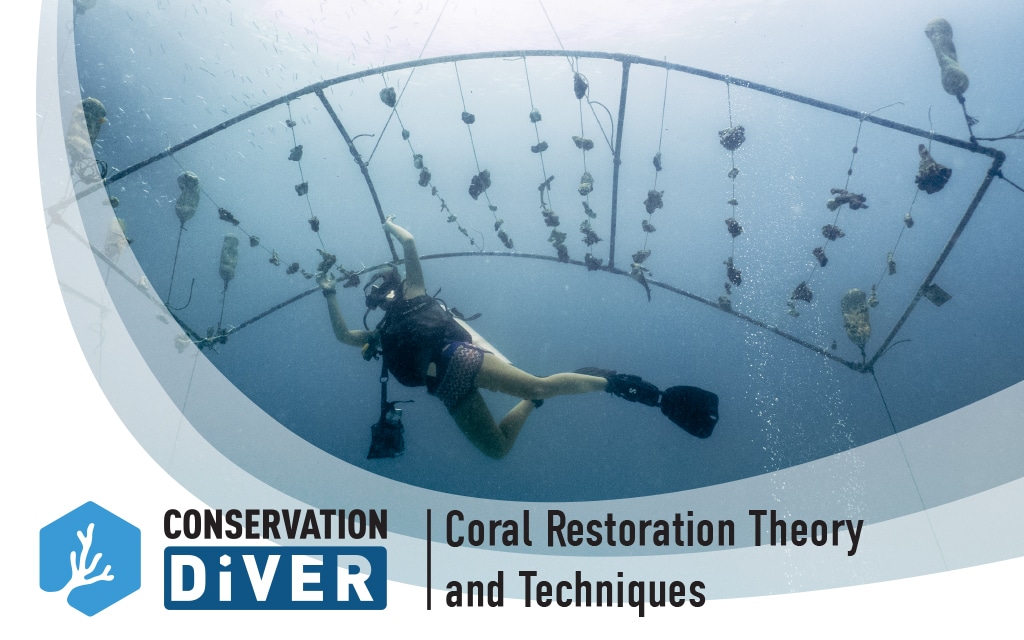
Training Centers
- Hawai'i - Ocean Alliance Project
- Madagascar - MRCI
- Indonesia – Blue Marlin Conservation
- Thailand – ATMEC
- Thailand – Black Turtle Conservation
- Thailand – NHRCP
Coral Restoration Related Readings
- Coral Restoration E ffectiveness: Multiregional Snapshots of the Long-Term Responses of Coral Assemblages to Restoration
- Ecotourism and Coral Reef Restoration
- Developing community-accessible methods of increasing coral reef resilience through selective coral breeding programs
- Coral restoration: Socio-ecological perspectives of benefits and limitations
- Boat Grounding incident in Chalok Ban Kao, 2015
- Artificial Coral Reefs as a Method of Coral Reef Fish Conservation
- Resilience-based assessment for targeting coral reef management strategies in Koh Tao, Thailand
- Effectiveness of artificial reefs as alternative dive sites to reduce diving pressure on natural coral reefs, a case study of Koh Tao, Thailand
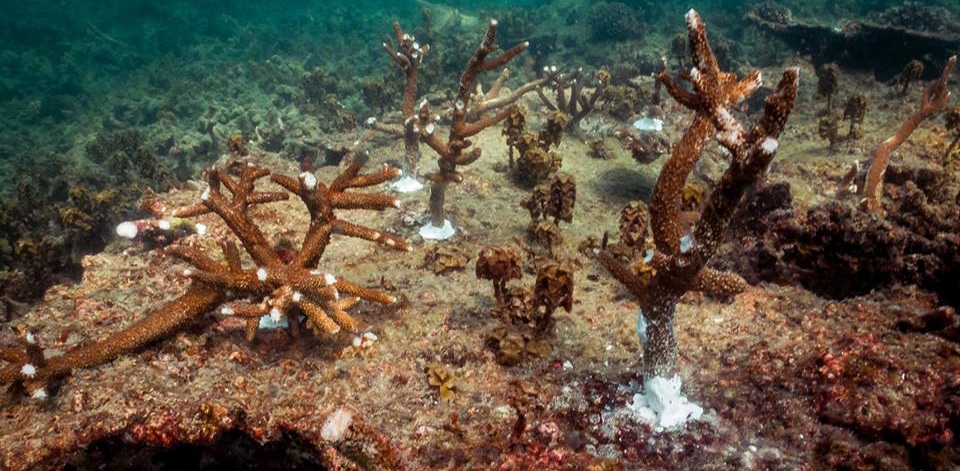
Ecological Monitoring Program
Ecological Monitoring Program

The Ecological Monitoring program is designed to give students an introduction to coral reef ecology and how to view the reef scientifically by assessing key biotic and abiotic reef components. The course teaches students how to use real world scientific sampling and reef survey techniques and certifies them to conduct their own surveys and report data back to the online database. Parameters assessed include fish and invertebrate abundance and biodiversity, substrate cover, coral taxonomy, coral diseases, coral bleaching, and more. This course is a prerequisite for many of the other courses offered by Conservation Diver
Prerequisites
- Be 12 years of age or older
- Be certified as an Advanced diver under a leading diving organization (PADI, SSI, RAID, etc) or an Open Water diver who has satisfactorily completed a buoyancy appraisal with a professional diver
- Demonstrate proper diving ability at an advanced Level and be proficient in buoyancy and self-awareness
Standards
- Understand more about coral reef ecology and threats to coral reefs
- Understand various survey techniques used by reef managers to monitor coral reef ecosystems
- Learn the techniques and diagnostic features for identifying coral reef invertebrates along a permanent transect line
- Learn the techniques and diagnostic features for identifying coral reef fishes and other vertebrates along a permanent transect line
- Learn how to assess substrate types and hard coral coverage/growth forms using the point-intercept technique
- Learn how to assess coral health and bleaching
- Perform EMP surveys in several different areas and input the data into the database
- Complete all 3 course exams
Requirements
- Attend all knowledge development presentations
- Complete the e-Learning or read and complete chapter reviews for chapters 1-8 in the EMP manual
- Enter records into database
- Perform all three surveys (invert., fish, and substrate) at least once
- Perform a ‘full EMP’ at least once
- Enter data onto data sheets or into the online database
Expected course time about 20 hours, minimum of 4 dives
Certification Card
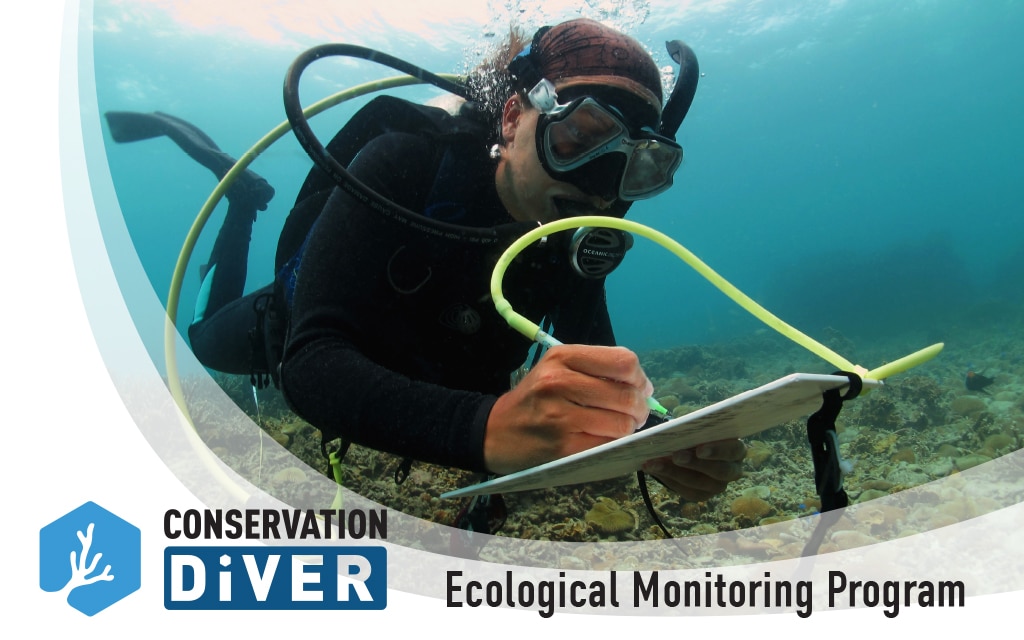
Training Centers
- Hawai'i - Ocean Alliance Project
- Indonesia - Blue Marlin Conservation
- Madagascar - MRCI
- Mallorca - Albatros Diving
- Thailand - ATMEC
- Thailand - Black Turtle Conservation
- Thailand - NHRCP
Related Resources
Note: This course has an accompanying textbook what come in a printed and electronic version available for purchase - Ecological Monitoring Program Manual
Published Papers and reports related to this course
- Population dynamics of corallivores (Drupella and Acanthaster) on coral reefs of Koh Tao, a diving destination in the Gulf of Thailand by Chad M. Scott, Rahul Mehrotra, Margaux Y. Hein, Michelangelo S. Moerland, and Bert W. Hoeksema
- Rare zooxanthellate Nanipora octocoral (Helioporacea) in the Gulf of Thailand by Pau Urgell Plaza, Rahul Mehrotra, Chad M. Scott and James Davis Reimer
- Changes in hard coral abundance and composition on Koh Tao, Thailand, 2006-2014 by Chad M. Scott, Rahul Mehrotra, Madalena Cabral and Sirachai Arunrugstichai
- An update to the list of coral reef fishes from Koh Tao, Gulf of Thailand by Patrick Scaps and Chad M. Scott
Giant Clam Nurseries and Population Studies
Giant Clam Nurseries and Population Studies

Giant Clams are important regulators of the oligotrophic conditions that coral reefs need the thrive. They are
able to filter on average 1000 litres of water per day which controls the water quality and nutrient levels in the ecosystem. This reduction in nutrients by filter feeders allow corals to thrive.
During this course students will be introduce to different
survey techniques to monitor giant clams and be taught the
key processes to evaluate and recognise different species.
We will also demonstrate the steps required to manage giant
clam nurseries and the on-going maintenance and data
collection to be done following transplanting.



Prerequisites
- Be 12 years of age or older
- Be certified as an Advanced diver under a leading diving organization (PADI, SSI, RAID, etc) or an Open Water diver who has satisfactorily completed a buoyancy appraisal with a professional diver
- Demonstrate proper diving ability at an advanced Level and be proficient in buoyancy and self-awareness.
- Be certified in our Ecological Monitoring Program
Standards
- Understand the importance, ecology, and threats to giant clam populations locally and around the globe
- Be able to identify anatomical features of giant clams in order to perform species recognition
- Learn techniques to survey and monitor local giant clam populations
- Learn techniques involving the use and maintenance of in-sea giant clam nurseries
Requirements
- Attend 1 Giant Clam Lecture
- Perform 1 survey dive specifically taking data on Giant Clam Abundance/Density, Diversity, and size distribution
- Take data on giant clam growth and mortality at the in-sea nurseries
- Perform general maintenance duties during 1 dive at the giant clam nurseries
- Complete the final quiz
- Enter data into Conservation Diver database
Expected course time about 8 hours
Certification Card
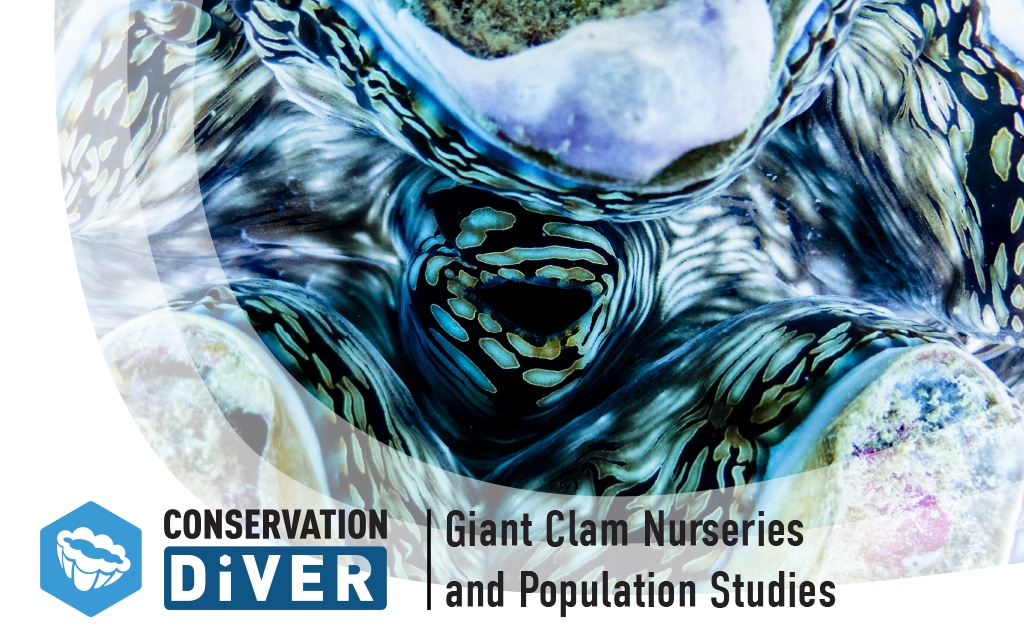
Training Centers
- Indonesia – Blue Marlin Conservation
- Thailand – ATMEC
- Thailand – Black Turtle Conservation
- Thailand – NHRCP
Seahorse Ecology and Monitoring
Seahorse Ecology and Monitoring
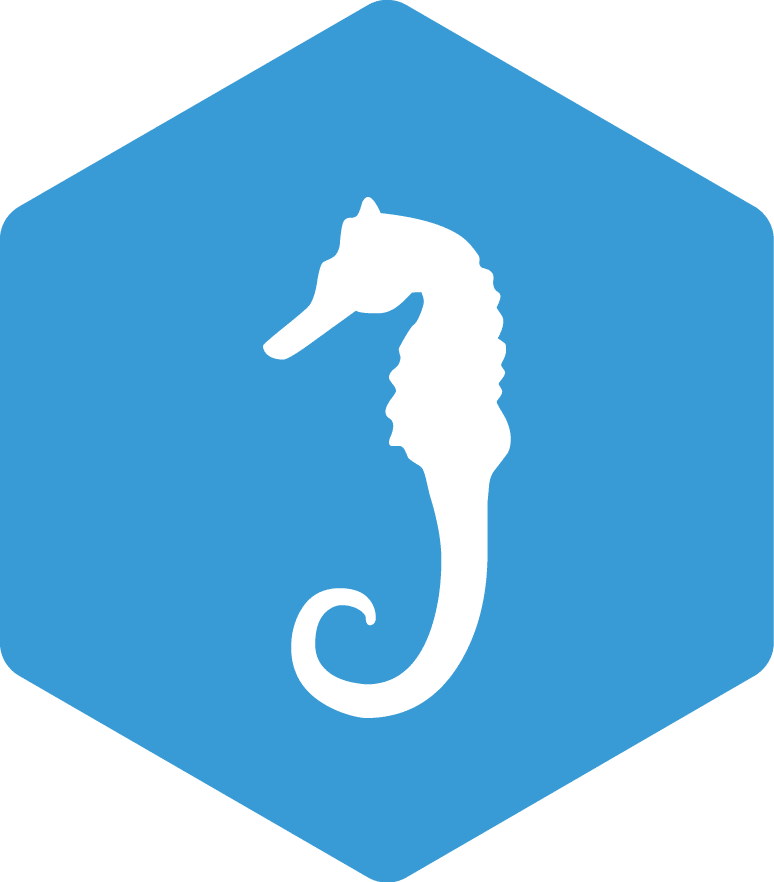
The Seahorse ecology and monitoring course aims bridge the information gap in the scientific community on classification, population dynamics and conservation status of Syngnathiformes. This lack of information is one of the limiting factors in creating effective conservation strategies to protect these vulnerable species. To successfully create adequate
conservation plans for seahorses, we need to understand their
life history traits and ecology. This course will equip you with the skills to identify seahorse species using anatomical features and behavioural ecology traits.



Prerequisites
- Be 12 years of age or older
- Be certified as an Advanced diver under a leading diving organization (PADI, SSI, RAID, etc) or an Open Water diver who has satisfactorily completed a buoyancy appraisal with a professional diver
- Demonstrate proper diving ability at an advanced Level and be proficient in buoyancy and self-awareness.
Standards
- Learn about seahorse ecology and identification and understand the global and local threats to seahorse populations
- Learn the diagnostic features for identifying seahorses and be able to identify the most common local species of seahorses
- Know how to survey for seahorses using the roving diver and transect survey methods
- Practice a seahorse survey completing at least two of the main tasks (surveying along the line, controlling the GPS raft, keeping track of dive activity timing)
- Be familiar with the iSeahorse.org website and how to enter sightings data into the global database
Requirements
- Attend 1 seahorse lecture
- Attend 1 seahorse dive briefing
- Complete ID quiz using dichotomous key and seahorse photos
- Complete 1 seahorse survey dives (in 2 different roles)
- Enter GPS data into Google Earth
- Enter sightings and data into the iSeahorse.org and other relevant databases (if seahorse was observed)
Expected course time about 4 hours
Certification Card
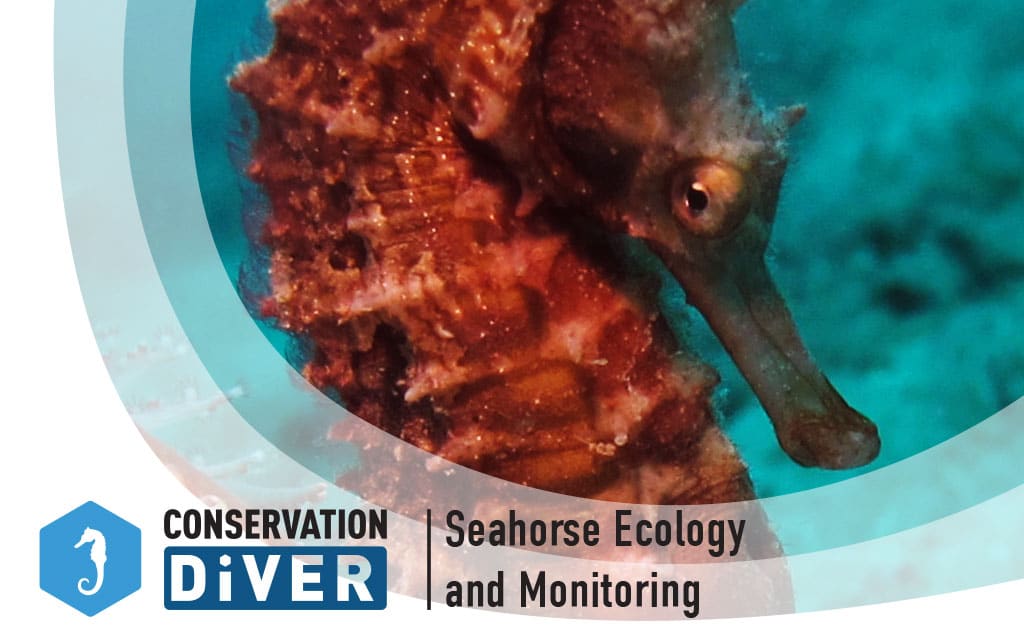
Training Centers
- Indonesia – Blue Marlin Conservation
- Madagascar - MRCI
- Thailand – ATMEC
- Thailand – Black Turtle Conservation
- Thailand – NHRCP
Citizen Science Collaborators

